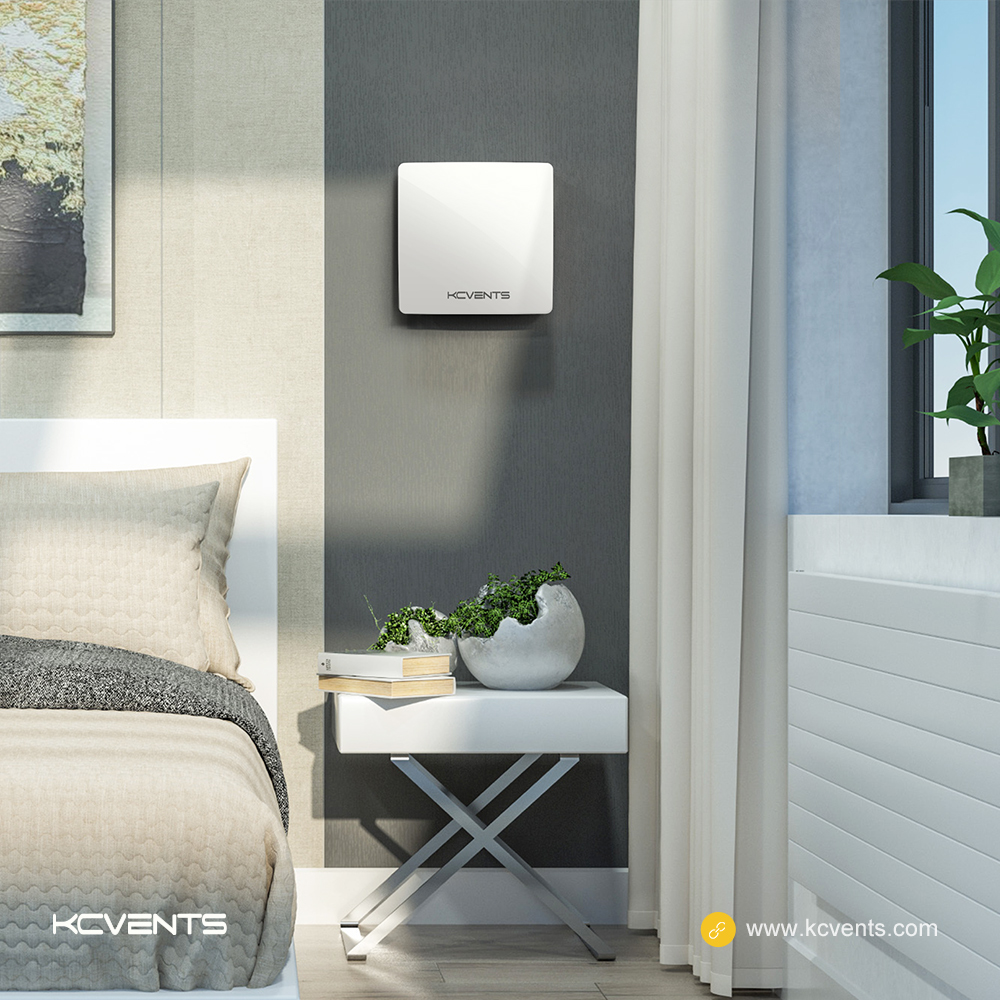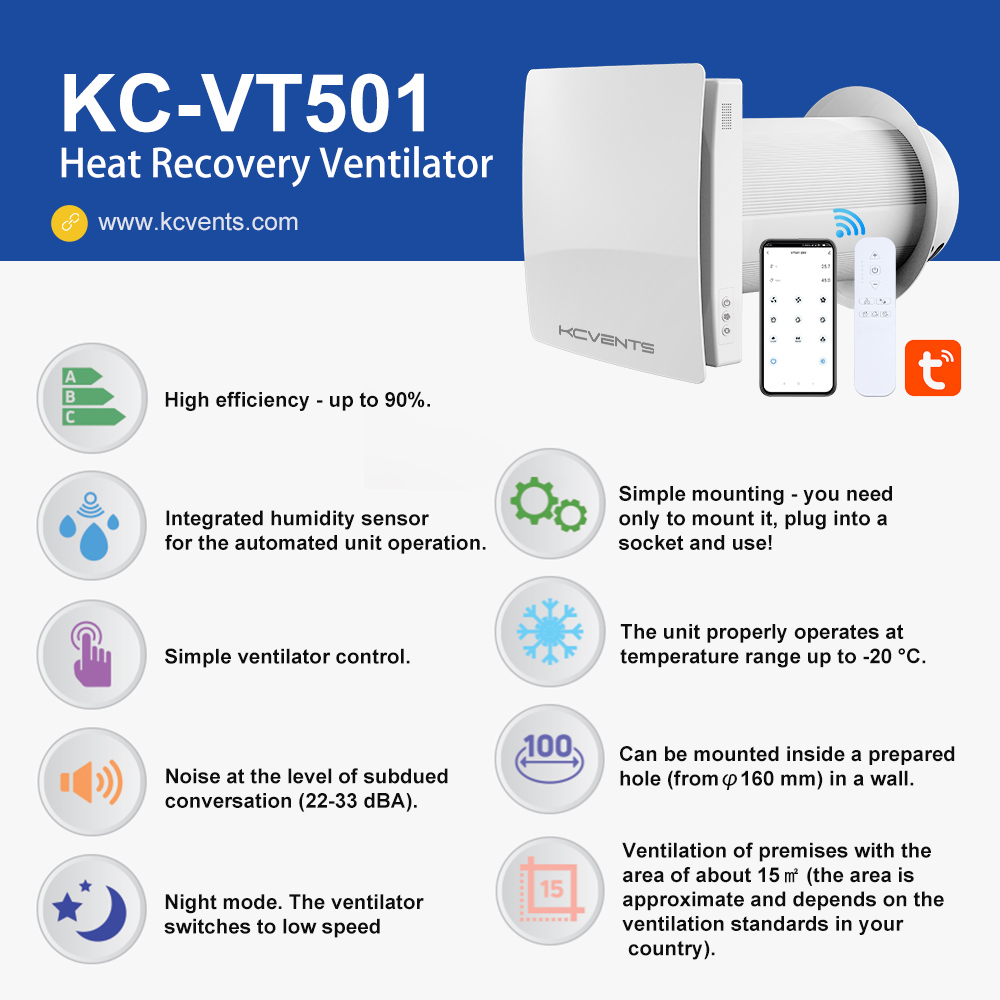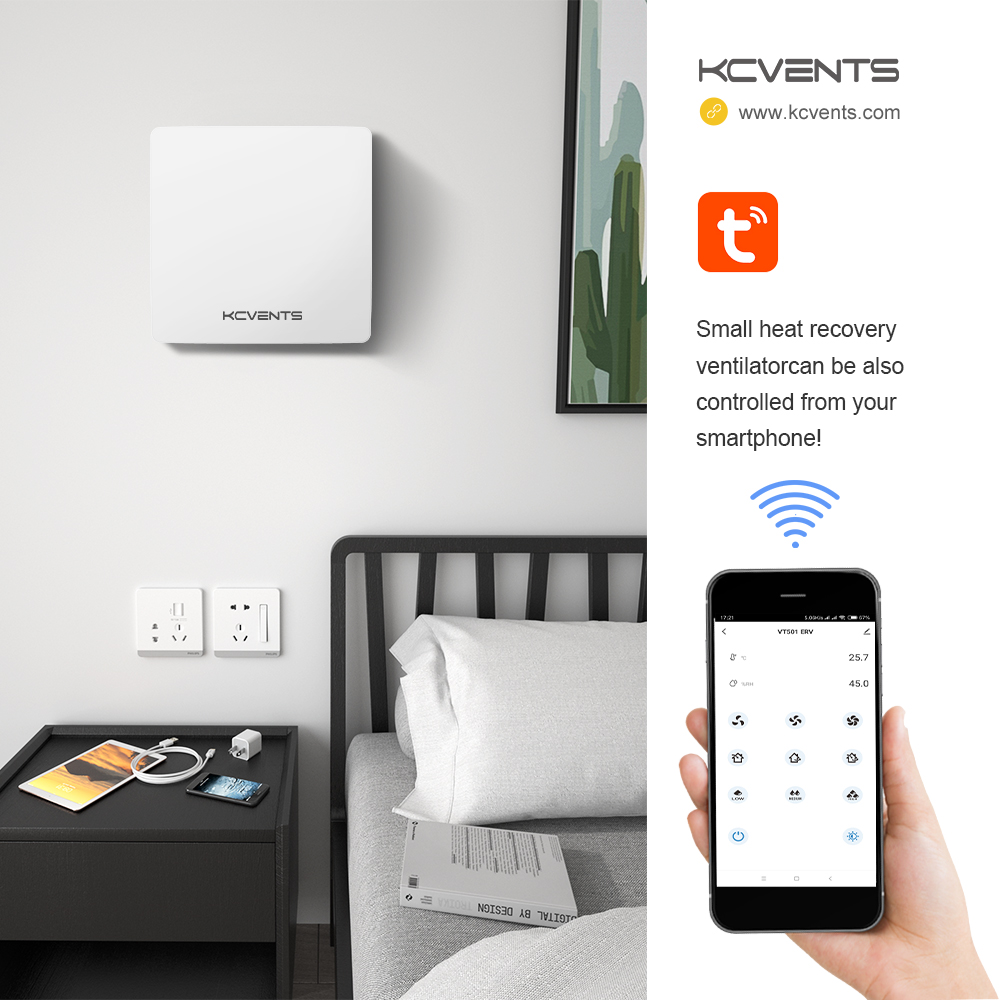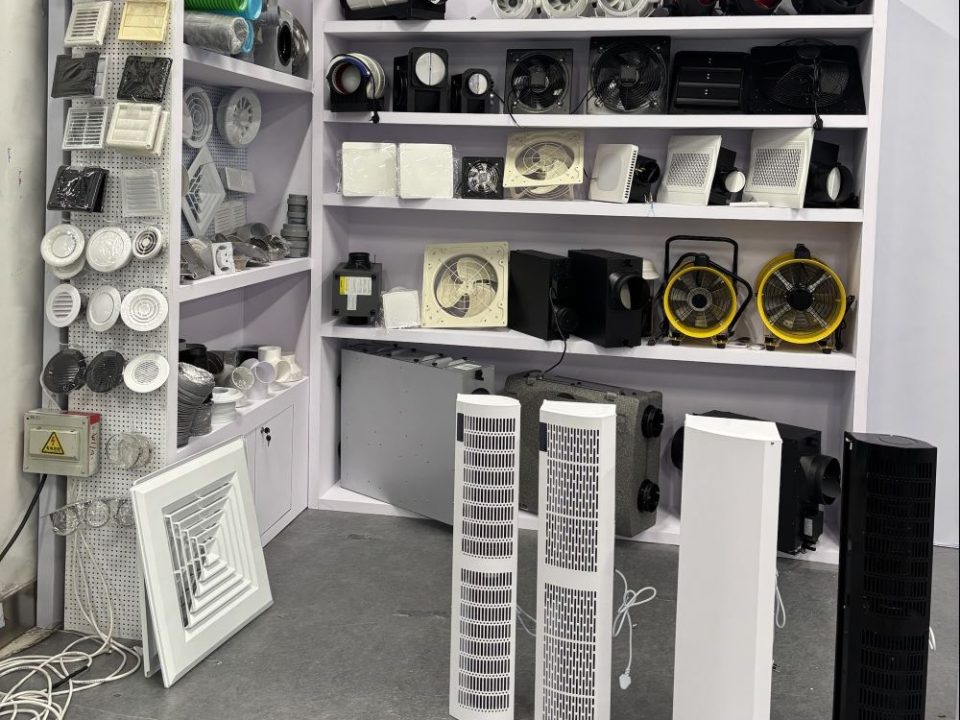he VT501 Single Room Heat Recovery Ventilator (HRV) is an excellent solution for single-family homes, enhancing indoor air quality while conserving energy. Here’s a comprehensive guide to help homeowners make the most of this innovative system.
1. Understanding the VT501 Functionality
The VT501 is designed to improve ventilation by exchanging stale indoor air with fresh outdoor air. Its heat recovery feature transfers warmth from outgoing air to incoming air, maintaining comfortable temperatures and reducing energy costs. This makes it especially valuable in single-family homes where air quality and energy efficiency are priorities.

2. Installation Tips
- Optimal Location: Choose a location that allows for effective air circulation. Ideally, install the unit in a central area of the home, such as a hallway or living room, to ensure even airflow throughout the house.
- Duct Configuration: Ensure that ductwork is properly sized and configured to minimize airflow resistance. Avoid long duct runs and sharp bends, which can decrease efficiency. Consult with a professional to optimize the duct layout.
- Professional Installation: While some homeowners may opt for DIY installation, hiring a qualified technician ensures that the unit is installed correctly and complies with local building codes. This can also help maximize the unit’s performance.

3. Operational Guidelines
- Choose the Right Mode: The VT501 typically offers different operating modes, such as “Auto,” “High,” and “Low.” Use the “Auto” setting for day-to-day operation, allowing the unit to adjust based on indoor air quality automatically.
- Continuous Operation: For best results, run the VT501 continuously. Regular operation helps maintain a consistent supply of fresh air, particularly in high-traffic areas like kitchens and living rooms.
- Monitor Indoor Air Quality: Keep an eye on humidity and air quality levels in your home. If humidity levels are high, consider additional dehumidification solutions to complement the HRV’s functionality.

4. Maintenance Practices
- Filter Maintenance: Regularly check and clean the filters to ensure optimal performance. Depending on usage, filters should be replaced every 3 to 6 months. Follow the manufacturer’s guidelines for specific filter types and maintenance procedures.
- Inspect Ducts: Periodically check the ductwork for any blockages or leaks. Clear any debris to maintain efficient airflow and consider having ducts professionally cleaned every few years.
- Seasonal Preparations: Before heating and cooling seasons, inspect the unit to ensure all components are functioning properly. Remove any obstructions and clean the exterior to maintain efficiency.
5. Creating a Comfortable Home Environment
- Zone Control: If your home has multiple VT501 units or other ventilation systems, consider using them to create distinct zones. This allows you to tailor ventilation based on the specific needs of different areas, such as bedrooms versus living spaces.
- Temperature Balance: On particularly hot or cold days, adjust the operation of the VT501 to balance incoming fresh air with indoor temperatures. Take advantage of its heat recovery capabilities to minimize energy costs while maintaining comfort.

The VT501 is a vital addition to any single-family home, promoting healthier indoor air quality and energy efficiency. By understanding its functionalities, following proper installation and operational practices, and committing to regular maintenance, homeowners can enjoy a more comfortable living environment. With the VT501, you’re not just improving air quality; you’re investing in your home’s overall health and sustainability.4o


